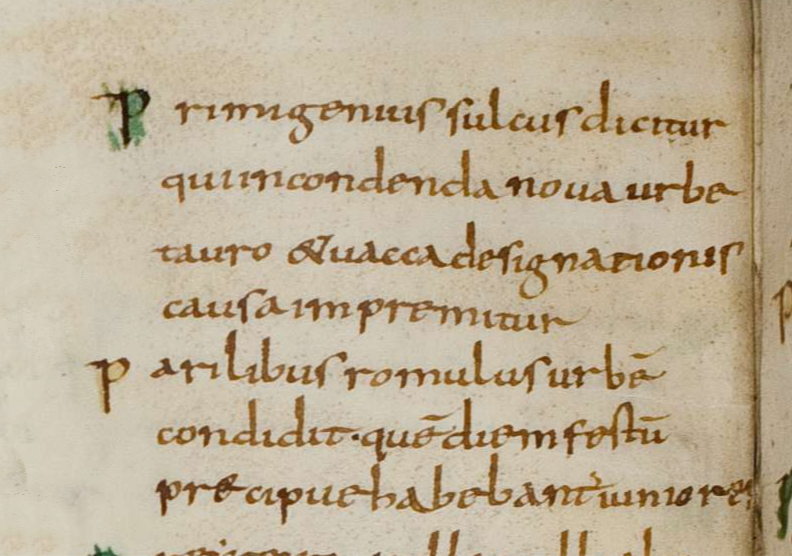Perseus, St. Paul, and Antoninus Pius
- sulla80

- Sep 7, 2020
- 4 min read
Updated: Nov 12, 2024

What do Perseus, St. Paul, and Antoninus Pius have in common? My coin of interest this week is another AE from Asia Minor, the Roman region of Lycaonia and the capital city of Iconium. Lycaonia was part of the larger Roman province of Galatia. Iconium a wealthy town on fertile land in the central plains, north of the Taurus mountains, along the Roman Via Sebaste.
This photo from the Anatolian Roads Project which has many other photos of Roman Roads. and Via Sebaste in particular.
In 25 BC Augustus established a colony in Lycaonia by setting aside a portion of the ancient city of Iconium for veterans. Under Claudius the city was called Claudiconium and the colony Colonia Julia Augusta Iconiensium.
The Apostle Paul visited Iconium on three of his missionary journeys between AD 48 and 57:
“At Iconium - Now it happened in Iconium that they [Barnabas and Paul] went together to the synagogue of the Jews, and so spoke that a great multitude both of the Jews and of the Greeks believed.”
- Acts 14.1It didn’t go well from there as Paul writes to Timothy:
“at Antioch, at Iconium, at Lystra—what persecutions I endured. And out of them all the Lord delivered me. Yes, and all who desire to live godly in Christ Jesus will suffer persecution.”
- 2 Timothy 3.10-12Paul and Barnabas escape being stoned in Iconium by fleeing to Lystra and then to Derbe, where Paul was stoned, dragged to the edge of town and left for dead. Nevertheless, they persevered in establishing the Christian church in Lycaonium.

Lykaonia, Iconium, Antoninus Pius, AD 138-161, Bronze Æ
Obv: ANTONINVS PIVS AVG, laureate, draped and cuirassed bust of Antoninus Pius right.
Rev: COL ICO, helmeted and draped bust of Athena right
Size: 17.6mm, 3.58g, 12h
Ref:RPC IV online 7259; Lindgren 1378
The coin's good portrait of Antoninus Pius and particularly nice reverse of Athena were a quick attraction and coins for this region are definitely underappreciated (i.e. not very expensive). This type, reverse only, appreas on a plate in George Francis Hill’s “Catalogue Of The Greek Coins Of Lycaonia Isauria And Cilicia” (1900):

and in Lindgren's Ancient Bronze Coins of Asia Minor and the Levant as 1378:

Hill shares a story of Iconium being named for the εικόν of the Gorgon used by Perseus to conquer the Lycaoneans. More of the story can be found here:
“John Malalas narrates Perseus’ progress through Asia Minor as a sort of mythological projection of a Hellenistic king’s campaign of conquest and foundation. On arrival in Lycaonia Perseus founds a city on the site of the village of Amandra. The new city takes its name, Iconium (modern Konya) from the ‘image’ (εικόν) of the Gorgon-head he sets up on a pillar there.”
- Perseus by Daniel OgdenWhat is the province in which Iconium sits? It turns out this has changed a few times over the centuries. Here's a summary of Iconium’s Provincial Associations:
100 BC - 25 BC: Lycaonia (sometimes under Cappadocian/Seleucid influence).
25 BC - 72 AD: Galatia. incorporated into the Roman province of Galatia following the death of King Amyntas of Galatia
72 AD - early 2nd century AD: under Emperor Vespasian, the provinces of Galatia and Cappadocia were combined temporarily to form a single administrative region
Early 2nd century AD - late 3rd century AD: By the time of Emperor Trajan (98–117 AD) or Hadrian (117–138 AD), Galatia and Cappadocia were once again separated into distinct provinces.
Late 3rd century AD - 300 AD: Lycaonia separated out again in Diocletians reforms
Κλαυδεικονιέων (Klaudeikonieon) is Claudiconium also needs some explanation - what happened under the reign of Claudius that this town retains the honorific Claud-iconium recognizing the Roman Emperor Claudius (reigned 41–54 AD)?
Under Claudius, Iconium was honored with the name Caludiconius. This name is found on this coin with a portrait of Titus and Perseus in Phrygian cap on the reverse:

Lycaonia, Iconium (as Claudiconium), Titus, as Caesar, AD 69-79, Æ (20mm, 6.11g, 9h)
Obv: AYTOKPAT • TITOC • KAIC[AP], laureate and cuirassed bust right
Rev: KΛAYΔЄI • KONIЄѠN, heroic bust of Perseus right, wearing Phrygian cap; harpa behind
Ref: von Aulock, Lycaoniens 288; RPC II 1608; SNG BN 2285
Hadrian traveled extensively during his reign. With celebrations honoring him when he arrived, he earned the name “New Dionysus” on the way to Athens in 124 – Dionysus being a traveling god who brought happiness with him. On the fateful trip where Antinous died on October 30, 129 AD between Memphis and Thebes, and after almost 2 years in Egypt, Hadrian began his journey home by way of Judea and Syria in the summer of 131 AD. Sometime between then and 134 AD when he returned to Rome – he passed through Lycaonia, and left behind his family name.
The colony set up by Augustus, co-existed with the city until Hadrian’s visit when he united the colony and the city extending the rights to Roman citizenship to the city. Extending “Colonia” to Iconium and the name to Colonia Aelia Hadriana Augusta Iconiensium. [Refs: Albino Garzetti, Stephen Mitchell]
Which brings me to the time of Antoninus Pius, when this coin was minted, the emperor detached Cilicia from Galatia, keeping Iconium with Galatia. Coins from Iconium are few and infrequently minted, there is only one other coin from the time of AP, with Athena standing.



Comments